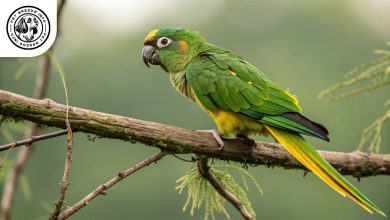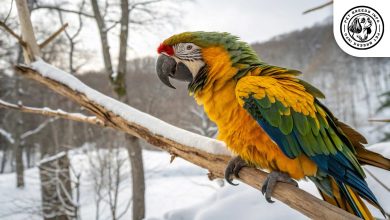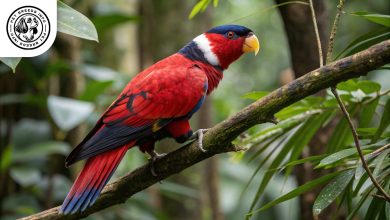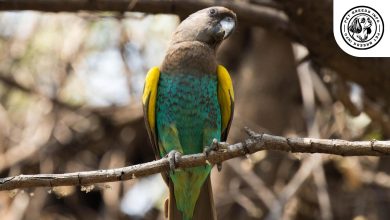Scarlet Macaw Bird: Personality, Lifespan, Food & Care
General Introduction of the Breed
The Scarlet Macaw (Ara macao) is a large and vibrant parrot native to Central and South America. It is also known as the “Guacamayo Rojo” in Spanish. These birds are primarily found in tropical rainforests across Mexico, Brazil, Bolivia, and Peru.
Scarlet Macaws have been admired for centuries due to their striking plumage and intelligence. They were revered by ancient civilizations such as the Mayans and Aztecs, who considered them sacred birds. Today, they are popular pets due to their colorful appearance and ability to mimic sounds.
Table of Contents
| Common Name | Scarlet Macaw |
| Scientific Name | Ara macao |
| Origin | Central and South America (Mexico, Brazil, Bolivia, Peru) |
| Size | 32–39 inches in length, 2.0–2.7 lbs in weight |
| Lifespan | 40–50 years (can exceed 75 in captivity) |
| Colors | Bright red body, yellow and blue on wings and tail |
| Talking Ability | Good mimic; can learn words and phrases |
| Noise Level | High; loud squawks, whistles, and calls |
| Social Behavior | Highly social; bonds deeply with owners, needs daily interaction |
Physical Characteristics
Scarlet Macaws are among the largest parrots, typically measuring around 32 to 39 inches (81-99 cm) in length, including their long tails. They weigh between 2.0 to 2.7 pounds (900-1200 grams).
Their plumage is mostly bright red, with yellow and blue feathers on the wings and tail. Their eyes are light-colored with white skin patches around them. They have strong, curved beaks that are pale on the upper mandible and black on the lower mandible. Their tails are long and pointed, which enhances their graceful appearance.
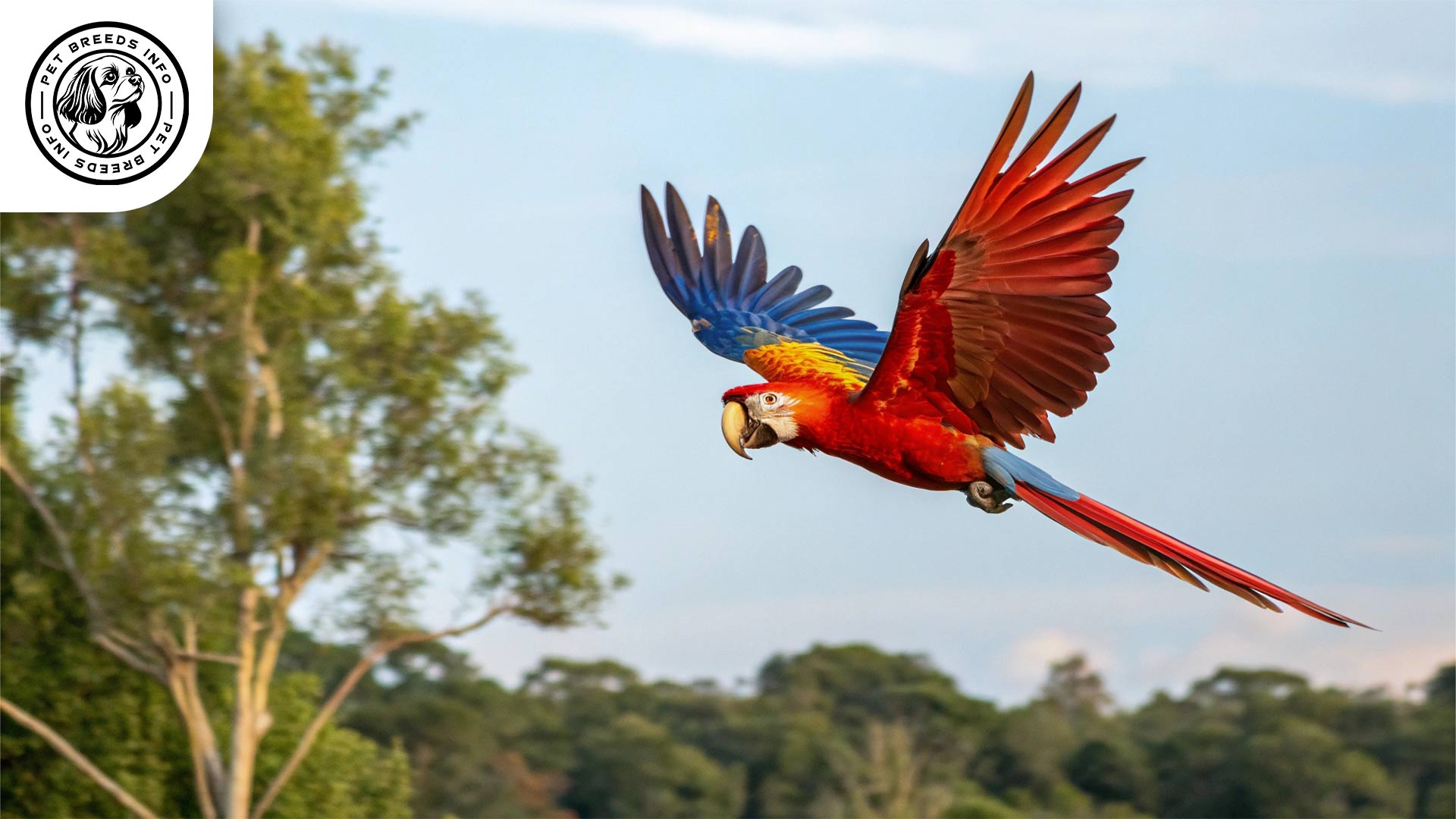
Personality and Temperament
Scarlet Macaws are highly intelligent and can quickly learn words and tricks. Their energy levels are high, requiring ample mental and physical stimulation.
They form strong bonds with their owners and need consistent social interaction. When well-socialized, they can be affectionate and playful, making them great companions.
These birds can be loud, with vocalizations that range from squawks to whistles and even spoken words. They do best in environments where noise is not an issue. While generally friendly, early training is essential to prevent aggressive tendencies.
Care and Maintenance Requirements
Scarlet Macaws require a spacious cage or aviary with plenty of toys to keep them entertained. They thrive best in a home where they can spend several hours outside of their cage each day.
Grooming includes regular nail trimming, bathing or misting, and maintaining a clean living space. Their beak should be monitored for proper growth, and chewing toys should be provided to keep it trimmed naturally.
They are sensitive to extreme temperatures and should be kept in a stable, warm environment.
Diet and Nutrition
A balanced diet for Scarlet Macaws includes high-quality pellets, fresh fruits, vegetables, and nuts. They should have a variety of foods to ensure proper nutrition.
Avoid feeding them chocolate, avocado, caffeine, onions, and salty or sugary foods, as these can be toxic.
Read More: Eclectus Parrot Bird
They typically eat about 10-15% of their body weight in food daily, with two main meals each day.
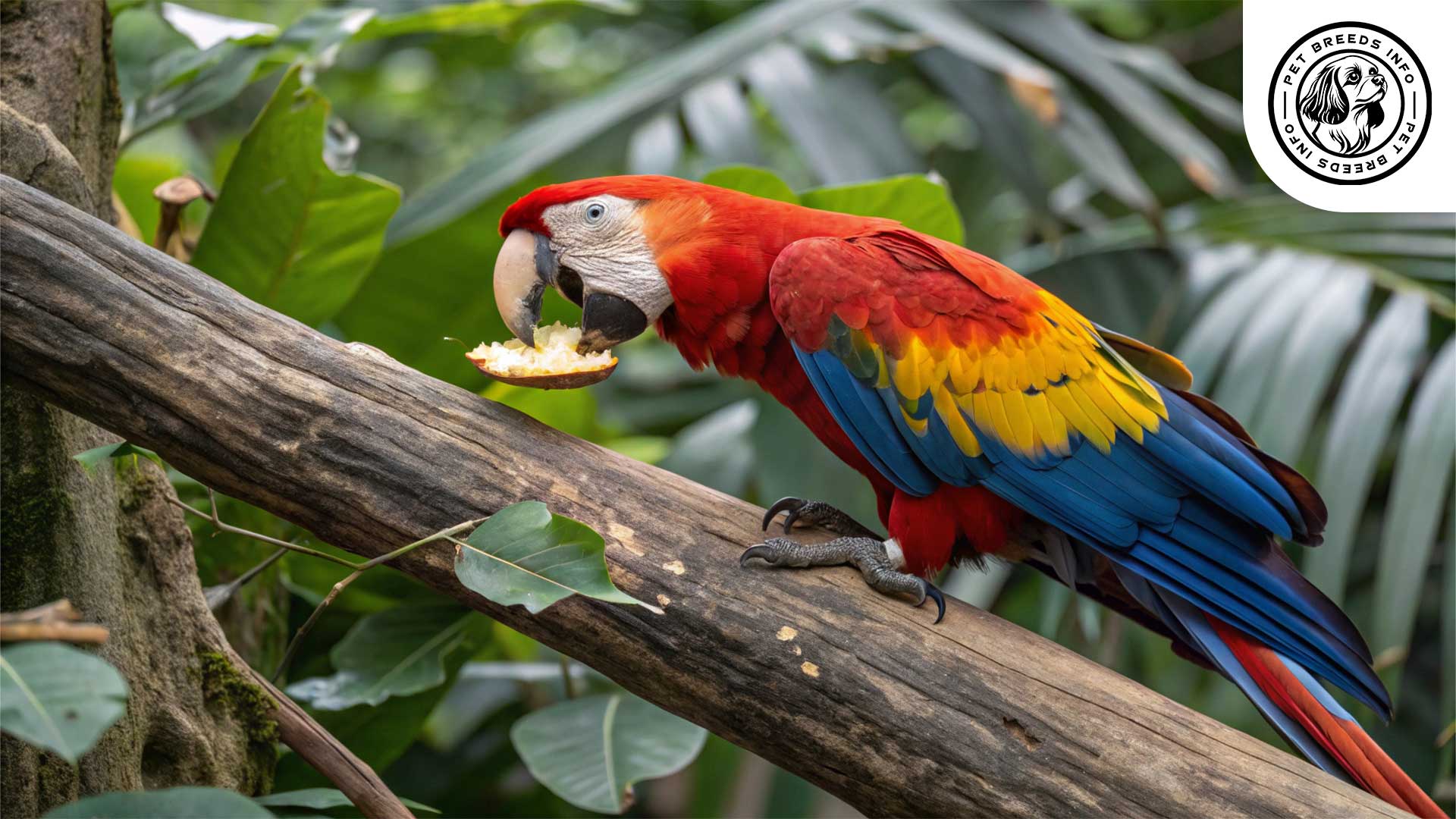
Health and Common Medical Issues
Common health concerns for Scarlet Macaws include psittacosis, feather plucking (due to stress or boredom), and beak malformations.
They require routine veterinary check-ups to monitor their health and diet. With proper care, they can live for 40 to 50 years, and some even surpass 75 years in captivity.
Regular vaccinations and parasite prevention are recommended to keep them healthy.
Training and Behavior Management
Scarlet Macaws are intelligent and responsive to training when approached with patience and consistency. Positive reinforcement works best, using treats and praise.
Early socialization is crucial to prevent aggressive or territorial behavior. They should be trained to interact gently with humans and other pets from a young age.
Read More: Greylag Geese
Basic commands such as “step up” and speech training can be taught easily with regular practice.
Interaction with Other Animals and Humans
Scarlet Macaws can be affectionate toward their owners but require time to bond. They enjoy attention and social activities.
They can be friendly with children but should always be supervised during interactions to prevent accidental bites.
If introduced properly, they can coexist with other birds, but they may become territorial, so precautions should be taken.
They thrive best in households where they receive frequent interaction and mental stimulation.
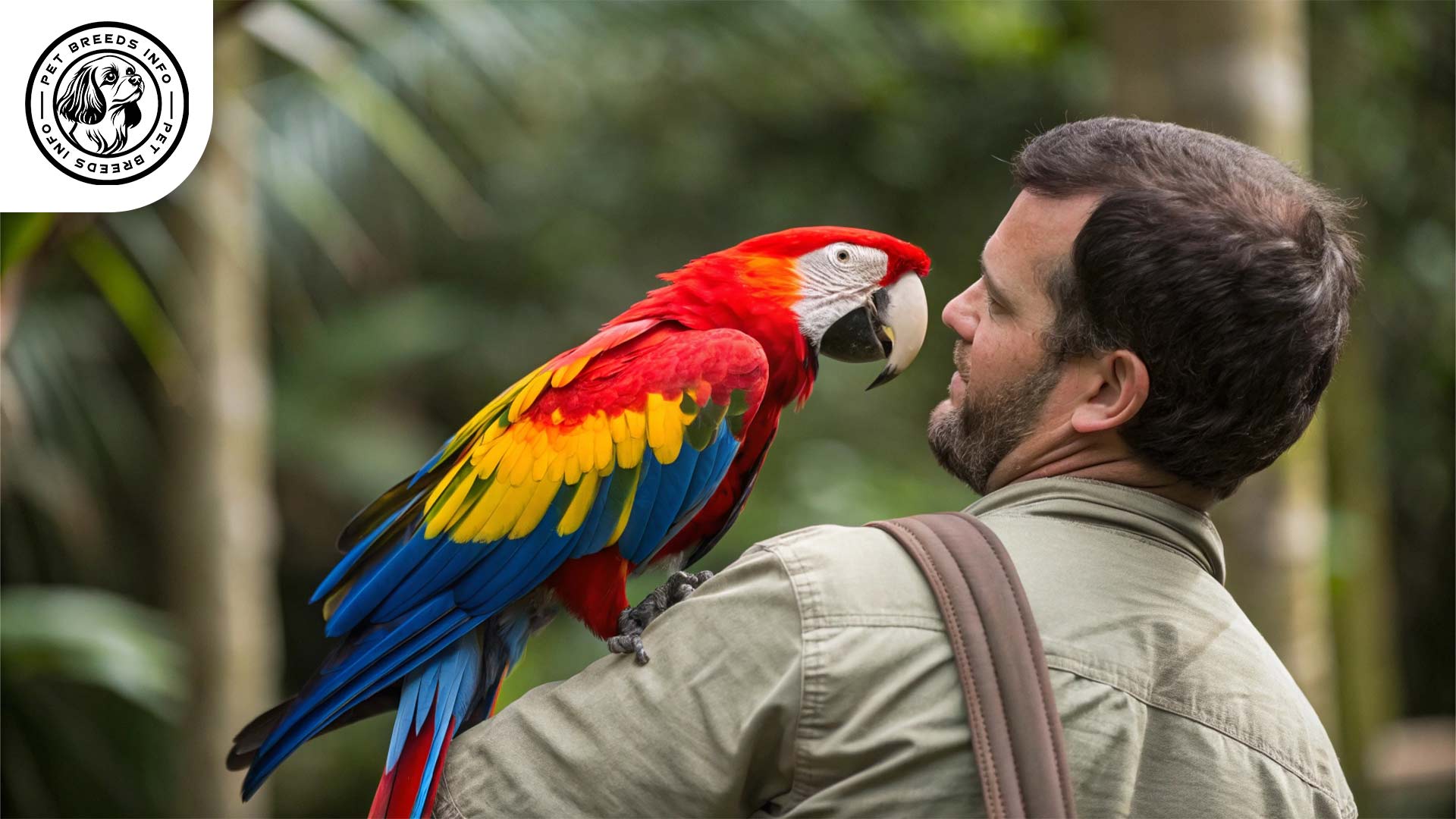
Price and Availability
Scarlet Macaws are considered expensive and can cost anywhere from $2,000 to $4,500, depending on the breeder and location.
It’s important to acquire them from reputable breeders or adoption centers to ensure ethical breeding practices.
Potential buyers should ensure they can commit to their long lifespan and needs before purchasing a Scarlet Macaw.
Conclusion and Final Thoughts
Scarlet Macaws make wonderful pets for experienced bird owners who can provide them with substantial time, training, and social interaction. Due to their intelligence and emotional sensitivity, they require a dedicated owner who understands their demands.
Read More: Chinese Swan Goose
They are best suited for spacious homes where they are not restricted to a small cage, and where daily engagement is provided. Anyone considering adopting a Scarlet Macaw should weigh the responsibilities of owning such a demanding but rewarding bird.
With proper care and love, a Scarlet Macaw can be a lifelong companion full of vibrant energy and personality.
FAQ
Are Scarlet Macaws good for first-time bird owners?
Not typically. They require experienced owners who can handle their intelligence, energy, and long lifespan.
Can Scarlet Macaws talk?
Yes, they are capable of mimicking human speech and sounds, though their clarity varies individually.
How much space does a Scarlet Macaw need?
They need a large cage or aviary and several hours outside the cage daily for exercise and mental stimulation.
Are Scarlet Macaws loud?
Yes. They have a high noise level and are best suited for homes where noise is not an issue.

